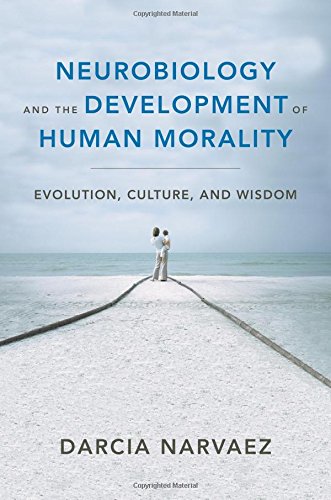Make America’s Children Healthy (Again): Part One
It is habitual for world leaders to point the finger at the disadvantages children face in less economically-advanced nations. It is a way to mobilize attention and resources to mitigate the identified problems.
But the finger pointing outward keeps many from examining how economically-advanced nations undermine the health of their own children, especially the USA. It reminds me of what Jesus said: “You hypocrite, first take the log out of your own eye, and then you will see clearly to take the speck out of your brother’s eye.” (Matthew 7:5, English Standard Version)

Don’t get me wrong. Deep economic poverty matters. If you are unable to receive good nutrition to build a healthy body and brain, you cannot flourish. Mother and baby nutrition certainly are important for a child’s health outcomes.
You might assume that US children are doing well enough—so we should focus attention on countries where children don’t get enough to eat. But US kids are often at the bottom of wellbeing measures that compare children in advanced nations. What’s up?
Sticking to nutrition in this series’ post, think of the nutritional issues in the USA. Many mothers eat mostly processed foods (which lack the natural nutrition of unprocessed foods and even contain harmful ingredients like trans fats, high fructose corn syrup, and sugar, setting themselves up for less-than-optimal conception and pregnancy. You can’t maintain a healthy body (or build a new one) on junk food. Maternal eating of junk food alters preferences in their offspring.
Then consider the typical nutrition that many middle class and wealthy children in the USA receive. Most children start out with artificial feeding from the beginning of life—a paltry few dozen ingredients that are non-human and in the wrong proportions for our species, unlike breastfeeding which provides species-specific milk of thousands of ingredients tailored to foster optimal growth at the time of feeding. So, the brain, immune system, at the very least do not develop optimally since breast milk has the building blocks for those systems and formula does not.
From the viewpoint of what is species typical and what fosters optimal normal development, artificial formula in infancy is malnourishment. Our ancestral practices until relatively recently was several years of breastfeeding. After the breastfeeding years, our ancestors did not eat three meals a day but ate from the abundance and nutritionally-rich sources of the natural world as they migrated cyclically to find those sources. Even during the last 10,000 years or so of civilization, the materially poor usually derived good nutrition from their own gardens, hunting and gathering—until in the 16th century these common lands were taken away by the elites who enclosed the lands for their own monetary benefit (see Stoll, 2018).

Early feeding practices shape the palate of the child for future food preferences. Most US children miss the changing flavors of breast milk in the first years of life that otherwise shape their palates for a wide ranging set of tastes and an openness to a range of foods.* Instead most US children start off with artificial feeding and then graduate to French fries (the most common first-food of infants) and artificial pabulum of various kinds—happening during the important first years when taste preferences are established. All this undermines an otherwise natural orientation to healthy foods. Junk food seems good enough to children whose palates have not been tuned up well, unlike children raised in conditions of good-palate development, as in France.
As junk food is purveyed around the world, health problems increase. Moreover, toxic chemicals used in processed foods and their packaging are thought to cause various health problems. Actually, industrial neurotoxic chemicals pervade our food, soil, water and air, with implications for our mental health:
Chlorpyrifos [used on fruits and vegetables kids eat, with efforts to ban it] is just one of 12 toxic chemicals Landrigan and Grandjean say are having grim effects on fetal brain development. Their new study is similar to a review the two researchers published in 2006, in the same journal, identifying six developmental neurotoxins. Only now they describe twice the danger: The number of chemicals that they deemed to be developmental neurotoxins had doubled over the past seven years. Six had become 12. Their sense of urgency now approached panic. “Our very great concern,” Grandjean and Landrigan wrote, “is that children worldwide are being exposed to unrecognized toxic chemicals that are silently eroding intelligence, disrupting behaviors, truncating future achievements and damaging societies.”
… Grandjean and Landrigan note in their research that rates of diagnosis of autism spectrum disorder and ADHD are increasing, and that neurobehavioral development disorders currently affect 10 to 15 percent of births. They add that “subclinical decrements in brain function”—problems with thinking that aren’t quite a diagnosis in themselves—“are even more common than these neurobehavioral development disorders.”
James Hamblin, author of The Atlantic article excerpts above, noted that the cause of toxicity in food and other products was “a broken system that allows industrial chemicals to be used without any significant testing for safety. The greater concern lies in what we’re exposed to and don’t yet know to be toxic.”
So mothers’ and children’s nutrition includes the ingestion of toxic chemicals that undermine child physical and mental health.
If we are going to make America’s children healthy, we need to support breastfeeding, healthy food products and feeding practices, as well as limited use of neurotoxins.
Steps We Can Take

Eat and provide organic food as much as possible (which was the norm till about the mid-20th century)
Set up your lives to make extensive breastfeeding possible (at least two years according to recommendations from the World Health Organization; at least one year according to the American Academy of Pediatrics); 6 months exclusive breastfeeding is recommended.
Around 6 months, allow a child to test regular table food as a means to expand their palate—let them try things out as they will. Give them healthy choices and let them pick.
Everyone
Support mothers breastfeeding wherever you are.
Support paid parental leave for at least one year so that children can be breastfed.
Support breast milk provision alternatives which are part of our heritage.
Orient to meeting children’s basic needs as part of society’s responsibility.
Policymakers
Pay attention to the research on how early experience sets up lifelong physical and mental health.
Attend to decreasing toxic chemicals in food, water, soil and air as the European Commission attempts to do (the US used to be the leader here).
Continue to emphasize the Baby-Friendly Hospital Initiative which is breastfeeding supportive.

